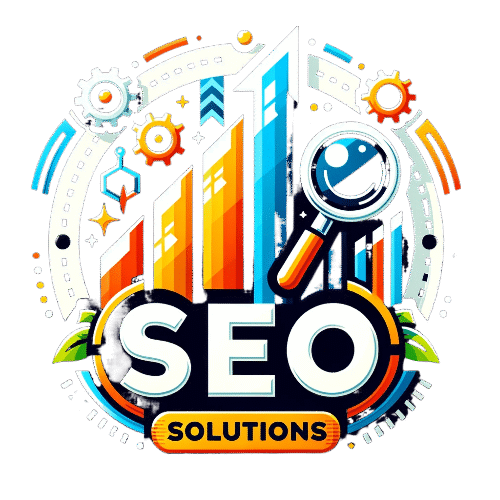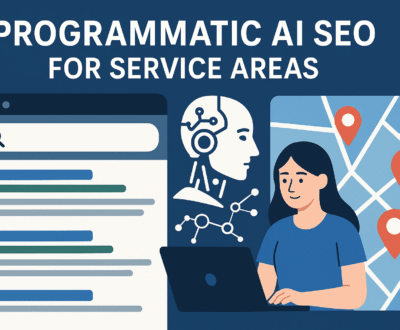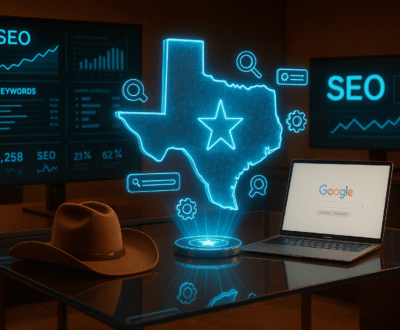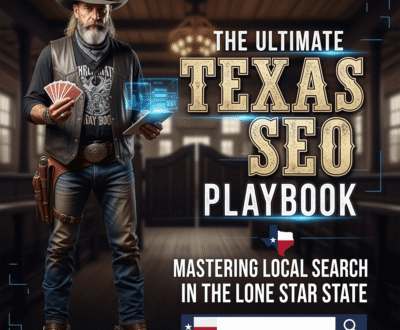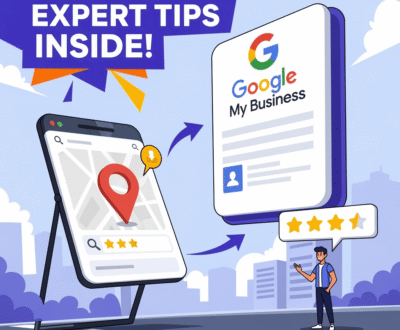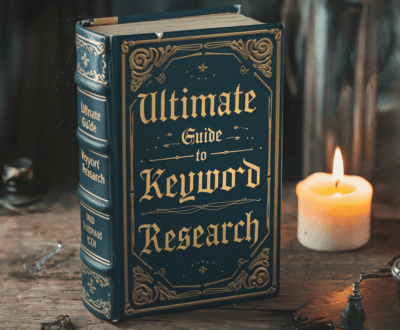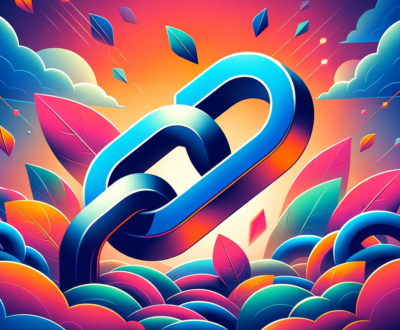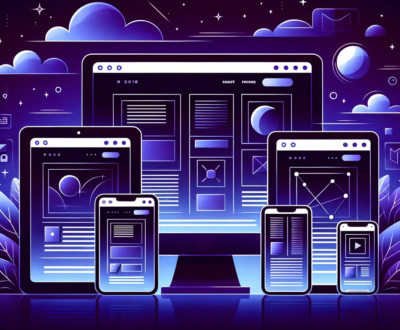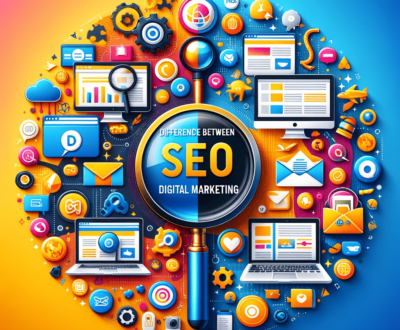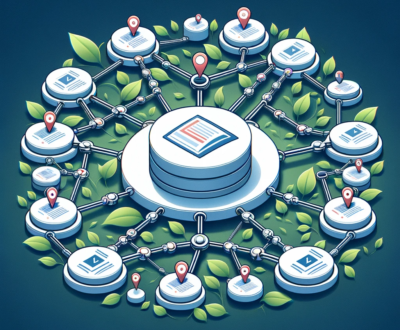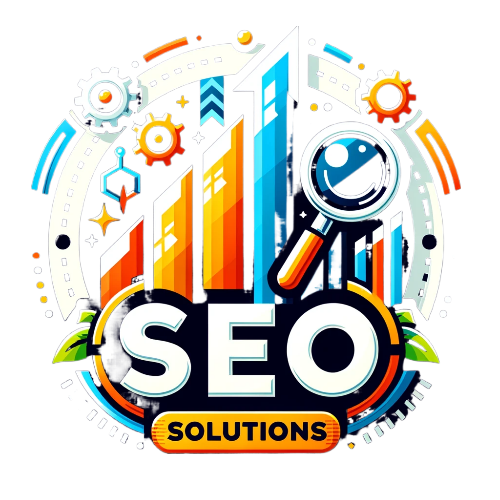🚀 The Ultimate 2025 Guide: 10X Your Conversions with These Advanced Conversion Rate Optimization Tips
📈 Beyond the Basics: Why Your Current CRO Strategy Is Failing (And How to Fix It)
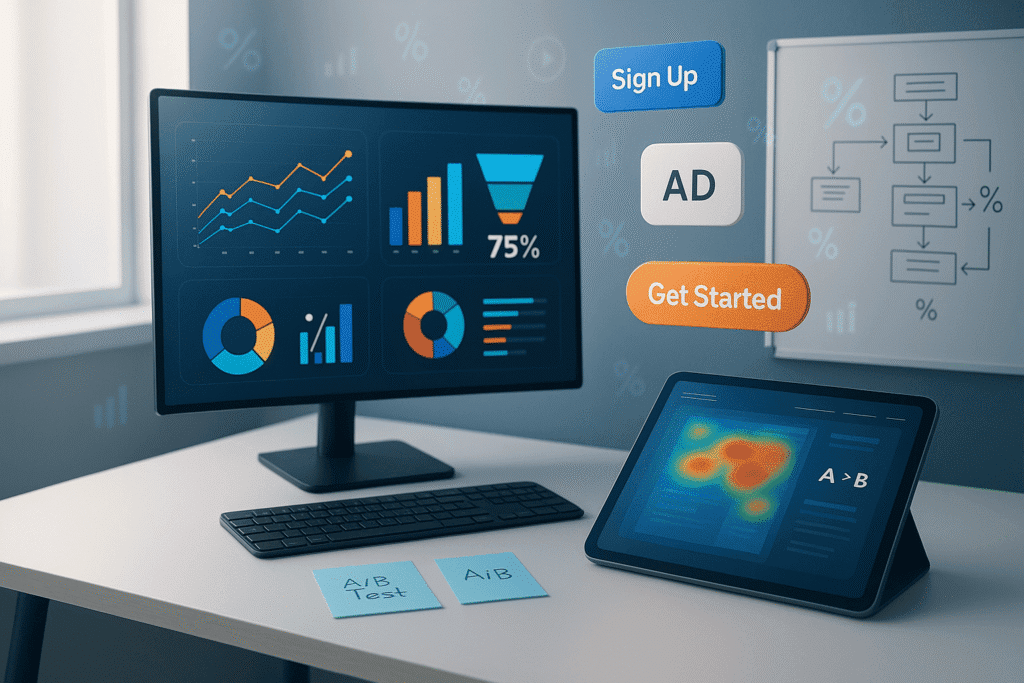
You’ve done everything by the book. You’ve poured resources into SEO to capture organic traffic. You’ve fine-tuned your PPC campaigns to attract the perfect audience. Your analytics show a steady stream of visitors arriving at your digital doorstep. Yet, the needle on the most important metric—conversions—barely flinches. This is a common and deeply frustrating scenario. The problem isn’t your traffic; it’s the experience that greets them. You’re leading horses to water, but they aren’t drinking.
This is where a sophisticated approach to conversion rate optimization (CRO) becomes not just a tactic, but the fundamental engine of your growth. Forget the tired advice of simply changing a button color.
True CRO is a multidisciplinary science blending data analytics, user psychology, and rigorous testing. It’s about understanding the silent conversation happening between a user and your website and systematically removing every point of friction, doubt, or confusion.
These advanced conversion rate optimization tips are designed to move you from guessing to knowing. They transform your website from a digital brochure into a relentless conversion machine. We’ll explore how to stop treating symptoms and start diagnosing the core issues that are suppressing your potential.
When you shift your focus, those hard-won clicks can be turned into tangible, profitable actions.
🔬 The Foundation: Mastering Qualitative and Quantitative Data Analysis

Before you change a single pixel on your website, you must first become a digital detective. The most powerful conversion rate optimization tips are born from data, not from a gut feeling or a competitor’s design. Effective CRO begins with a deep dive into two types of data: quantitative (the ‘what’) and qualitative (the ‘why’). Ignoring one for the other is like trying to navigate with only a map but no compass. You need both to find your way to higher conversions.
📊 Decoding Quantitative Data: Google Analytics 4 for CRO
When applying these design-focused conversion rate optimization tips, you can dramatically reduce bounce rates and increase user engagement.
Quantitative data provides the hard numbers about user behavior. It tells you *what* is happening on your site, where users are dropping off, and which pages are underperforming. Google Analytics 4 (GA4) is your primary tool for this. Instead of just looking at surface-level metrics like users and sessions, you need to dig deeper.
Start by building a Funnel Exploration report. Map out the critical steps a user must take to convert, from landing on a page to completing a purchase or filling out a form. This report will visually show you the exact point of the most significant drop-off. Is it between adding an item to the cart and initiating checkout? Or between viewing the shipping options and completing payment? This tells you precisely where to focus your optimization efforts.
Start by building a Funnel Exploration report. Map out the critical steps a user must take to convert, from landing on a page to completing a purchase or filling out a form. This report will visually show you the exact point of the most significant drop-off. Is it between adding an item to the cart and initiating checkout? Or between viewing the shipping options and completing payment? This tells you precisely where to focus your optimization efforts.
Next, use the Path Exploration report to see the actual, often chaotic, journeys users take. You might discover they are looping between two pages, indicating confusion, or using your site’s internal search in unexpected ways. These insights are goldmines for identifying friction points.
🧠 Unlocking Qualitative Insights with User Feedback
Quantitative data shows you where the leak is, but qualitative data tells you why it’s leaking. This is the voice of your customer. Tools that provide heatmaps and session recordings are invaluable here.
Heatmaps are aggregated visual representations of where users click, move their mouse, and scroll. They can reveal that users are clicking on non-clickable elements (a sign of confusing design) or ignoring your primary call-to-action (CTA). Session recordings are even more powerful; they are like watching over a user’s shoulder as they navigate your site.
🔍 Insight: Don’t just analyze averages. Segment your data. How do mobile users behave differently from desktop users? New visitors versus returning customers? The conversion barriers for these groups are often vastly different. Averages can hide the most significant optimization opportunities.
🧠 Psychological Warfare: Leveraging Cognitive Biases for Higher Conversions
Your users aren’t purely rational beings; they are guided by a complex web of cognitive shortcuts and emotional triggers known as cognitive biases. Understanding and ethically leveraging these psychological principles is one of the most potent conversion rate optimization tips in any marketer’s arsenal.
It’s about aligning your website’s messaging and design with the inherent ways the human brain makes decisions. This isn’t manipulation; it’s effective communication that reduces cognitive load and builds trust, guiding users toward a decision that benefits them.
👻 Scarcity and Urgency: The Fear of Missing Out (FOMO)
The principle of scarcity states that people place a higher value on things that are less available. This taps into our primal fear of missing out. You can apply this by using time-based scarcity (e.g., “Sale ends in 24 hours”) or quantity-based scarcity (e.g., “Only 3 left in stock”). These tactics work because they force a decision, preventing the user from procrastinating and potentially forgetting about the purchase. However, it must be used authentically.
If your “limited time offer” is always available, users will quickly learn to ignore it, damaging your credibility. Use real-time inventory counters or countdown timers that are genuinely tied to the offer’s availability for maximum impact.
🤝 Social Proof: The Power of the Crowd
Humans are social creatures. When we are uncertain, we look to others for cues on how to behave. This is social proof. On your website, this translates into reviews, testimonials, case studies, and trust badges.
But you can go deeper. Instead of just a star rating, show the distribution of ratings. Displaying “85% of reviewers gave this 5 stars” is more powerful than a generic 4.5-star average.
⚓ Anchoring and Decoy Effect: Framing Your Pricing
The first piece of information a user sees heavily influences their subsequent judgments. This is the anchoring bias. On a pricing page, if you list your most expensive plan first, it ‘anchors’ a high price in the user’s mind, making the other plans seem more reasonable by comparison.
You can combine this with the decoy effect. Imagine you have two plans: a Basic plan for $10 and a Pro plan for $30. Many will choose the Basic. Now, introduce a third ‘Decoy’ plan: a Plus plan for $27 that offers only slightly more than the Basic plan.
💎 Nugget: The ‘Commitment and Consistency’ bias suggests that once we make a small commitment, we are more likely to make a larger one later. Use this with multi-step forms. Ask for just an email on step one (a small commitment). Once the user has invested, they are more psychologically primed to complete the remaining, more demanding fields.
✍️ Copywriting That Converts: The Art of Persuasive Messaging
Your website’s design may capture attention, but it’s the copy that persuades and converts. Words are the primary tool you have to communicate value, address objections, and guide users to action. Effective conversion copywriting isn’t about using fancy words or clever puns; it’s about clarity, empathy, and focus. Every headline, every button, and every product description is an opportunity to either build momentum or create friction.
Many businesses make the mistake of talking about themselves—their features, their history, their technology. Your user doesn’t care about you; they care about their problems. The most crucial of all conversion rate optimization tips for copywriting is to shift the focus from ‘we’ to ‘you’.
🗣️ Finding Your Voice: The Value Proposition Canvas
Before you write a single word, you need to understand the intersection of your customer’s needs and your product’s offerings. The Value Proposition Canvas is a simple but powerful framework for this. It forces you to map out your customer’s ‘jobs’ (what they are trying to accomplish), ‘pains’ (their frustrations and obstacles), and ‘gains’ (their desired outcomes). Then, you map your product’s features as ‘pain relievers’ and ‘gain creators’.
This exercise ensures your copy speaks directly to the user’s reality. Instead of saying, “Our software has a 256-bit encryption feature,” you say, “Keep your personal data safe and secure from threats.” One is a feature; the other is a benefit that relieves a pain point. Your headline, subheadings, and body copy should all be a direct reflection of this value proposition.
🎯 Microcopy: The Tiny Words with a Giant Impact
Microcopy refers to the small bits of text on your site that guide the user experience: button labels, form field hints, error messages, and security reassurances. It’s often an afterthought, but it can have a massive impact on conversions. Consider the difference between a button that says “Submit” versus one that says “Get Your Free Quote.” The second option is specific, benefit-oriented, and reduces anxiety.
When a user encounters an error message, a generic “Invalid Input” creates frustration. A helpful “Oops! It looks like your password needs at least one number” turns a moment of friction into a moment of guidance. Look at every piece of microcopy on your site, especially in your checkout or lead gen forms, and ask: “Does this text reduce ambiguity, build trust, and motivate the next action?”
📧 Email Copywriting Secrets
Your optimization efforts shouldn’t stop at the website. Email is a powerful conversion channel, from abandoned cart sequences to lead nurturing. The same principles apply: focus on the user. Your subject line is the headline; it must be compelling enough to earn the open. Inside the email, maintain a single, clear call-to-action. Don’t ask them to read your blog, follow you on social media, and buy a product all in one message. For inspiration on what works, browsing galleries of killer email marketing examples can spark ideas for layout, copy, and calls-to-action that are proven to perform. Notice how the best emails use a conversational tone and focus on a single, compelling offer.
🎨 Design for Persuasion: Beyond Aesthetics to User Experience (UX)
Every second—no, every millisecond—counts. A slow-loading website is a conversion killer. Studies consistently show that as page load time increases, the bounce rate skyrockets. Users today expect instant gratification.
Website design is not fine art; it’s a tool for communication and persuasion. While aesthetics are important for establishing credibility, a truly high-converting design prioritizes function over form. It’s about creating a visual hierarchy that guides the user’s eye, removing distractions, and making the path to conversion as effortless as possible.
A great user experience (UX) design is invisible; the user doesn’t notice it because everything works exactly as they expect. A poor UX, on the other hand, creates consistent friction and frustration. This can cause users to abandon your site long before they see your offer.
🗺️ Architecting the User Journey: Frictionless Navigation
Imagine walking into a large department store with no signs. That’s what a website with poor navigation feels like. Your navigation menu should be simple, logical, and use terminology that your users understand. Avoid clever or jargon-filled labels. ‘Solutions’ is vague; ‘Pricing for Small Business’ is clear. Ensure your site’s structure is shallow, allowing users to get to any important page within three clicks. Use visual cues to guide attention.
High-contrast colors for your primary CTA buttons make them stand out. Use whitespace strategically to declutter the page and draw focus to the most important elements. The goal is to reduce the user’s cognitive load—the amount of brainpower required to use your site. The easier it is to think, the easier it is to convert.
📱 Mobile-First Optimization: The Non-Negotiable Mandate
In 2025, having a mobile-responsive site is not enough. You need a mobile-first design. This means you design the experience for the smallest screen first and then scale up to desktop. This approach forces you to prioritize what’s truly essential. On a mobile device, screen real estate is precious. Forms need to be simpler, buttons need to be larger and easily tappable (thumb-friendly design), and navigation often needs to be tucked into a ‘hamburger’ menu. Test your mobile experience relentlessly.
Can you easily complete a purchase with one hand while waiting in line for coffee? If not, you’re losing a massive segment of your audience. Pay close attention to mobile-specific form inputs, like bringing up the numeric keypad for phone number or credit card fields. These small details create a seamless experience that builds user confidence.
A page that takes more than 3 seconds to load is already testing their patience. Use Google’s PageSpeed Insights to diagnose your site’s performance. Common culprits include oversized images and bloated code from too many plugins or apps.
Compressing images, leveraging browser caching, and minifying CSS and JavaScript files are technical but essential steps. A faster website not only improves the user experience but is also a positive ranking factor for SEO.
A page that takes more than 3 seconds to load is already testing their patience. Use Google’s PageSpeed Insights to diagnose your site’s performance. Common culprits include oversized images, bloated code (from too many plugins or apps), and slow server response times.
⚡ The Need for Speed: How Page Load Time Kills Conversions
Every second—no, every millisecond—counts. A slow-loading website is a conversion killer. Studies consistently show that as page load time increases, the bounce rate skyrockets. Users today expect instant gratification. A page that takes more than 3 seconds to load is already testing their patience. Use Google’s PageSpeed Insights to diagnose your site’s performance.
Common culprits include oversized images, bloated code (from too many plugins or apps), and slow server response times. Compressing images, leveraging browser caching, and minifying CSS and JavaScript files are technical but essential steps. A faster website not only improves the user experience but is also a positive ranking factor for SEO. Investing in page speed is one of the highest-ROI technical optimizations you can make.
📄 Landing Page Perfection: Crafting High-Impact Conversion Funnels
Sending paid traffic from an ad or social media post to your generic homepage is one of the most common and costly mistakes in digital marketing. Your homepage is designed to serve many masters—it has navigation, blog links, an about section, and multiple CTAs. A landing page, in contrast, is a specialist. It’s a purpose-built page with a single, focused objective: to convert a visitor for a specific campaign. Mastering the art of the landing page is a cornerstone of effective CRO. These pages are your digital salespeople, working 24/7 to turn targeted traffic into leads or sales. The following conversion rate optimization tips are specifically for creating these high-performance assets.
🎯 The One-Page, One-Goal Principle
The most important rule of landing page design is the principle of attention ratio. This is the ratio of things a user *can* do on the page to the number of things you *want* them to do. On a perfect landing page, this ratio is 1:1. There should be only one primary call-to-action. This means removing the main site navigation, the footer links, social media icons, and any other potential ‘leaks’ that could distract the user from the conversion goal. The entire page—the headline, the copy, the images, and the form—should work in concert to support that single goal. If the goal is to download an ebook, the only clickable action should be the button that says “Download Your Ebook Now.” This ruthless focus is what makes dedicated landing pages so effective.
🎬 Above the Fold: Winning the First 5 Seconds
The ‘above the fold’ section is the part of your landing page visible without scrolling. You have about 5 seconds to convince a visitor that they are in the right place and that you have the solution to their problem. This area must contain four key elements: a compelling headline, a supporting sub-headline, a hero shot (an image or video showing context of use), and the call-to-action. Your headline must create ‘message match’ with the ad that brought the visitor there. If your ad promised “Easy Accounting Software for Freelancers,” your headline should echo that promise, not something generic like “The Future of Accounting.” This reassures the user and instantly builds trust. The CTA should be visible above the fold, even if it’s repeated further down the page.
📋 Example: A company running a Google Ad for “emergency plumbing services” should not link to their homepage. The ad should direct to a landing page with the headline “Need an Emergency Plumber in [City Name]? We’re On Our Way!” followed by a large, tappable phone number and a simple contact form. All other links are removed to focus the user on the single goal: making contact. Using dedicated landing page builders makes creating and testing these focused experiences much faster than relying on a web developer.
🧪 The Scientific Method of CRO: Structuring Your A/B Testing Program
All the data analysis and psychological insights in the world are useless without a structured way to implement and validate them. This is where A/B testing (or split testing) comes in. It’s the process of comparing two versions of a webpage (a control ‘A’ and a variation ‘B’) to see which one performs better against a specific goal. A structured testing program moves you from random acts of optimization to a systematic process of continuous improvement. It’s the engine that powers modern CRO, turning your website into a living laboratory.
These conversion rate optimization tips focus on building a robust testing culture, not just running one-off tests.
💡 From Insight to Hypothesis: Crafting Testable Ideas
A good test doesn’t start with “Let’s test a green button vs. a red button.” It starts with a strong, data-backed hypothesis. A proper hypothesis follows a clear structure: “Based on [data insight], we believe that changing [element] to [variation] will result in [expected outcome] because [psychological principle or reason].” For example: “Based on session recordings showing users hesitate at our checkout, we believe that adding trust badges (like Visa, PayPal) below the ‘Complete Purchase’ button will increase conversions because it will alleviate security concerns at the final moment of decision.”
This structure ensures your tests are purposeful and that you learn something valuable even if the test doesn’t ‘win’. To manage your ideas, use a prioritization framework like the ICE score, which is presented in the table below.
| 🔢 Component | ❓ Question | ⚖️ Scoring (1-10) |
|---|---|---|
| Impact | If this works, how big will the impact be on our key metric? | 1 = Minor tweak, 10 = Major revenue driver |
| Confidence | How confident are we that this change will have a positive impact? (Based on data) | 1 = Wild guess, 10 = Strong supporting data |
| Ease | How easy is this to implement technically? | 1 = Full site redesign, 10 = Simple text change |
📈 Reaching Statistical Significance (and Avoiding False Positives)
This is the most critical and most misunderstood part of A/B testing. You can’t just run a test for a day, see that version B has more conversions, and declare it the winner. You need to reach statistical significance, typically at a 95% confidence level. This means there is only a 5% chance that the observed result is due to random luck. Most A/B testing tools will calculate this for you. It’s also crucial to run the test for a full business cycle (at least one week, preferably two) to account for daily fluctuations in user behavior. Ending a test too early because you see an initial lift is a classic mistake that often leads to implementing a ‘false positive’—a change that doesn’t actually improve performance in the long run.
🔄 The Iterative Loop: Learning from Every Test, Win or Lose
The goal of a testing program is not just to find ‘winners’. It’s to learn and iterate. Every test, regardless of the outcome, provides a valuable insight into your audience. If a test ‘loses’, your hypothesis was proven wrong. Why? What does that tell you about your users’ motivations? Document every test result in a central repository. Note the hypothesis, the result, the confidence level, and your key learning. This knowledge base becomes an invaluable asset, preventing you from re-testing the same failed ideas and allowing you to build on previous learnings to create more sophisticated and successful tests in the future. A mature CRO program celebrates learning as much as it celebrates winning.
🛒 E-commerce Goldmine: Advanced Conversion Rate Optimization Tips for Online Stores
For e-commerce businesses, conversion rate is the lifeblood of the company. Even a fractional improvement can translate into significant revenue gains. While general CRO principles apply, online stores have unique challenges and opportunities, particularly in the product discovery, consideration, and checkout phases. The journey from casual browser to loyal customer is fraught with potential drop-off points. The following advanced conversion rate optimization tips are tailored specifically for the e-commerce environment, aiming to streamline this journey and maximize the value of every visitor.
🔍 Optimizing On-Site Search for Purchase Intent
Visitors who use your on-site search bar are not just browsing; they have high purchase intent. They know what they want, and they are telling you in their own words. This is a golden opportunity. Your search functionality must be fast, accurate, and helpful. It should handle typos and synonyms gracefully (‘handbag’ should also return results for ‘purse’). As a user types, provide auto-suggestions with product thumbnails to guide them more quickly. Your search results page should not be a simple list of links. It should be a dynamic category page, complete with filtering and sorting options (by price, rating, new arrivals, etc.). Analyze your ‘no results found’ search queries.
These are direct indicators of unmet demand or navigational confusion. Are people searching for a product you don’t carry? Consider stocking it. Are they using a different term for a product you do have? Add it as a keyword to the product data.
Your goal is to make the checkout process as fast and painless as possible. Here’s a checklist of essential optimizations:
The product detail page (PDP) has to do the heavy lifting of a physical product demonstration. High-quality, professional images are non-negotiable. Show the product from multiple angles and include a zoom function.
- ✅ Offer Guest Checkout: Forcing users to create an account is a primary cause of abandonment.
- 📊 Show a Progress Bar: Visually indicate the steps to manage expectations.
- 📝 Reduce Form Fields: Eliminate every non-essential field.
- 🤖 Use Address Autofill: Tools like Google Places API can autocomplete addresses.
- 🛡️ Display Trust Seals: Reassure users about security right where they enter credit card information.
Cart abandonment is the bane of every e-commerce store. The checkout process is where the most qualified customers are lost, often due to unnecessary friction. Your goal is to make it as fast and painless as possible. Here’s a checklist of essential optimizations:
- ✅ Offer Guest Checkout: Forcing users to create an account is a primary cause of abandonment. Make it optional.
- 📊 Show a Progress Bar: Visually indicate the steps (e.g., Shipping > Payment > Review) to manage expectations.
- 📝 Reduce Form Fields: Do you really need their phone number? Or a separate billing address if it’s the same as shipping? Eliminate every non-essential field.
- 🤖 Use Address Autofill: Tools like Google Places API can autocomplete addresses, reducing typing and errors.
- 🛡️ Display Trust Seals: Reassure users about security right where they enter credit card information.
📦 Product Page Power-Ups: From Images to Reviews
The product detail page (PDP) has to do the heavy lifting of a physical product demonstration. High-quality, professional images are non-negotiable. Show the product from multiple angles, in context of use, and include a zoom function. A short video demonstrating the product in action can be incredibly powerful. Your product descriptions should go beyond technical specs and sell the benefits. Use bullet points for easy scannability.
Social proof is paramount here: display customer ratings and reviews prominently. Allow users to filter reviews (e.g., by rating, or search for keywords within reviews). Answering customer questions directly on the page in a Q&A section can proactively address common objections and build a valuable repository of user-generated content.
⚠️ Important: Be transparent about shipping costs and delivery times. Unexpected shipping fees revealed at the final step of checkout are the #1 reason for cart abandonment. Display shipping costs upfront on the product page or in the cart.
💡 Beyond the Website: Optimizing the Entire Customer Lifecycle
A truly sophisticated CRO strategy doesn’t end when a user clicks “Buy Now.” The initial conversion is just one milestone in a much longer customer journey.
The most profitable businesses understand that retaining an existing customer is far cheaper than acquiring a new one. Therefore, your optimization efforts should extend across the entire customer lifecycle, from the first purchase to repeat business and advocacy.
📧 Post-Conversion Nurturing: Turning Customers into Advocates
What happens immediately after a customer converts? A generic “Thank You” page is a wasted opportunity. This is a moment of high engagement where the customer feels positive about their decision. Use this opportunity to deepen the relationship. Your thank you page could include a video on how to get the most out of their new product, an invitation to a VIP community, or a special offer for a future purchase. Your transactional emails (order confirmation, shipping notification) don’t have to be boring. Inject your brand’s personality and use them to cross-sell related products or ask for a review once the product has been delivered. A well-timed and personalized post-purchase email sequence can significantly increase repeat purchase rates.
💬 Using Chatbots and Live Chat to Guide and Convert
Live chat and intelligent chatbots are powerful tools for real-time objection handling. They can act as a digital sales assistant, answering questions and guiding users through complex decisions. Instead of waiting for a user to get stuck and leave, you can proactively engage them. For example, if a user has been on a pricing page for more than 60 seconds, a chatbot can pop up and ask, “Have any questions about our plans? I’m here to help.” This can be the difference between a lost lead and a new customer. For e-commerce, chatbots can help with order tracking, return processing, and basic product questions, freeing up your human support agents to handle more complex issues. They provide instant support, which is a key driver of customer satisfaction and conversion.
🔄 Optimizing for Customer Lifetime Value (CLV), Not Just the First Sale
Don’t forget to apply the advanced conversion rate optimization tips we’ve discussed here to enhance your website’s performance and improve user experience.
Ultimately, the goal is to create a business model where the value of a customer grows over time. This requires a shift in mindset. Instead of asking, “How can we get this person to buy today?” ask, “How can we deliver an experience so good that this person will want to buy from us again and tell their friends?” This involves analyzing data on repeat purchase rates, average order value, and customer churn. It might mean that a strategy that slightly lowers the initial conversion rate but dramatically increases CLV (like a subscription model or a loyalty program) is the better long-term business decision. This advanced perspective is what separates good optimizers from great ones.
💬 Quote: “Conversion rate optimization is not about tricks or hacks. It’s about understanding your users’ needs, motivations, and concerns better than your competitors and addressing them in your design and copy.” – Peep Laja, CXL
🏁 Your CRO Journey Starts Now: From Insights to Action
We’ve journeyed through the intricate world of conversion rate optimization, from the foundational bedrock of data analysis to the advanced strategies of psychological influence and lifecycle marketing. It’s clear that CRO is not a one-time project but a continuous, iterative process—a cultural shift towards customer-centric, data-informed decision-making. The sheer volume of conversion rate optimization tips can feel overwhelming, but the path forward doesn’t require you to do everything at once. The most successful CRO programs are built on small, consistent, and validated improvements over time. The power lies in the momentum you build.
Don’t let analysis paralysis stop you. The goal is not to create the ‘perfect’ website overnight but to make it slightly better for your users tomorrow than it is today. Choose one area from this guide that resonated with you—perhaps it’s diving into your checkout funnel in GA4, scripting your first on-site survey, or drafting a powerful A/B test hypothesis. Take that first step. The journey of a thousand conversions begins with a single test. Start listening to your users, trust the data, and begin your transformation from a business that simply gets traffic to one that earns customers.
🤔 Frequently Asked Questions About CRO
What is a good conversion rate?
A “good” conversion rate is highly relative and varies dramatically by industry, traffic source, and business model. E-commerce might average 1-3%, while a targeted B2B lead gen form could see 5-10%. Instead of chasing a universal number, focus on consistently improving your own baseline rate. The best conversion rate is one that is better than last month’s. It’s a journey of continuous improvement, not a single destination.
How long does it take to see CRO results?
You can see results from a single A/B test within a few weeks, provided you have enough traffic to reach statistical significance. However, a true CRO program is a long-term strategy. The cumulative effect of consistent testing and learning builds over months and years. The goal is to create a sustainable system for growth, not just to find a few quick wins, though those are great too!
Should I focus on qualitative or quantitative data first?
Final Note: Always remember that these advanced conversion rate optimization tips are not just strategies; they are integral to building a user-friendly and high-converting website.
Start with quantitative data (like Google Analytics) to identify the biggest problem areas—the ‘what’ and ‘where’. For example, find the page with the highest exit rate in your conversion funnel. Then, use qualitative data (like heatmaps or surveys) on that specific page to understand *why* users are leaving. This two-step process is far more efficient than guessing where to start your qualitative analysis.
Ultimately, the goal is to create a business model where the value of a customer grows over time. This requires a shift in mindset.
What’s the biggest mistake in A/B testing?
The most common and costly mistake is stopping a test too early, as soon as one variation appears to be winning. This often leads to implementing a false positive based on random chance rather than a true user preference. You must run tests for a full business cycle (e.g., 1-2 weeks) and wait for your tool to report a high level of statistical significance (usually 95% or more).
Can CRO work for B2B lead generation sites?
Absolutely. The principles are the same, but the goals are different. For B2B, a ‘conversion’ might be a demo request, a whitepaper download, or a contact form submission. CRO for B2B involves optimizing landing pages for ad campaigns, clarifying complex value propositions, building trust with case studies and testimonials, and streamlining multi-step lead forms to reduce friction for busy professionals.
How much does CRO cost?
The cost can range from nearly free to tens of thousands of dollars per month. You can start with free tools like Google Analytics and Google Optimize. Mid-tier costs involve premium tools for heatmapping, A/B testing, and surveys. High-end costs typically involve hiring a specialized CRO agency or an in-house team of experts. The key is that effective CRO should not be a cost, but an investment with a high positive ROI.
Is changing a button color really effective?
While changing a button color is the classic example of an A/B test, it’s rarely the most impactful change. A color change might produce a small lift if the original color had poor contrast and was hard to see. However, tests that change the value proposition, headline, page layout, or offer itself will almost always have a much larger and more meaningful impact on your conversion rate than a simple color swap.
📚 DIGITAL MARKETING SOLUTIONS BLOG 🎉
We are a cutting-edge digital marketing and SEO agency dedicated to driving more website traffic and attracting new customers for our clients.
🔓 Unlock Your Free Business Analysis and Strategy
We provide professional SEO and digital marketing services that dramatically improve your visibility across search engines, social media, and key online networks—helping you rank higher, reach more potential customers, and grow your brand across the web.
🔖 Get Access To Our Secret Newsletter 🤐
Recent Posts
- 🚀 Programmatic AI SEO for Service Areas: The Ultimate 2025 Playbook to Dominate Local Demand September 30, 2025
- 🚀 Best SEO Solutions in 2025: The Ultimate Guide to Dominating Search September 15, 2025
- 12 Ways Digital Marketing Can Grow Your Business July 24, 2025
